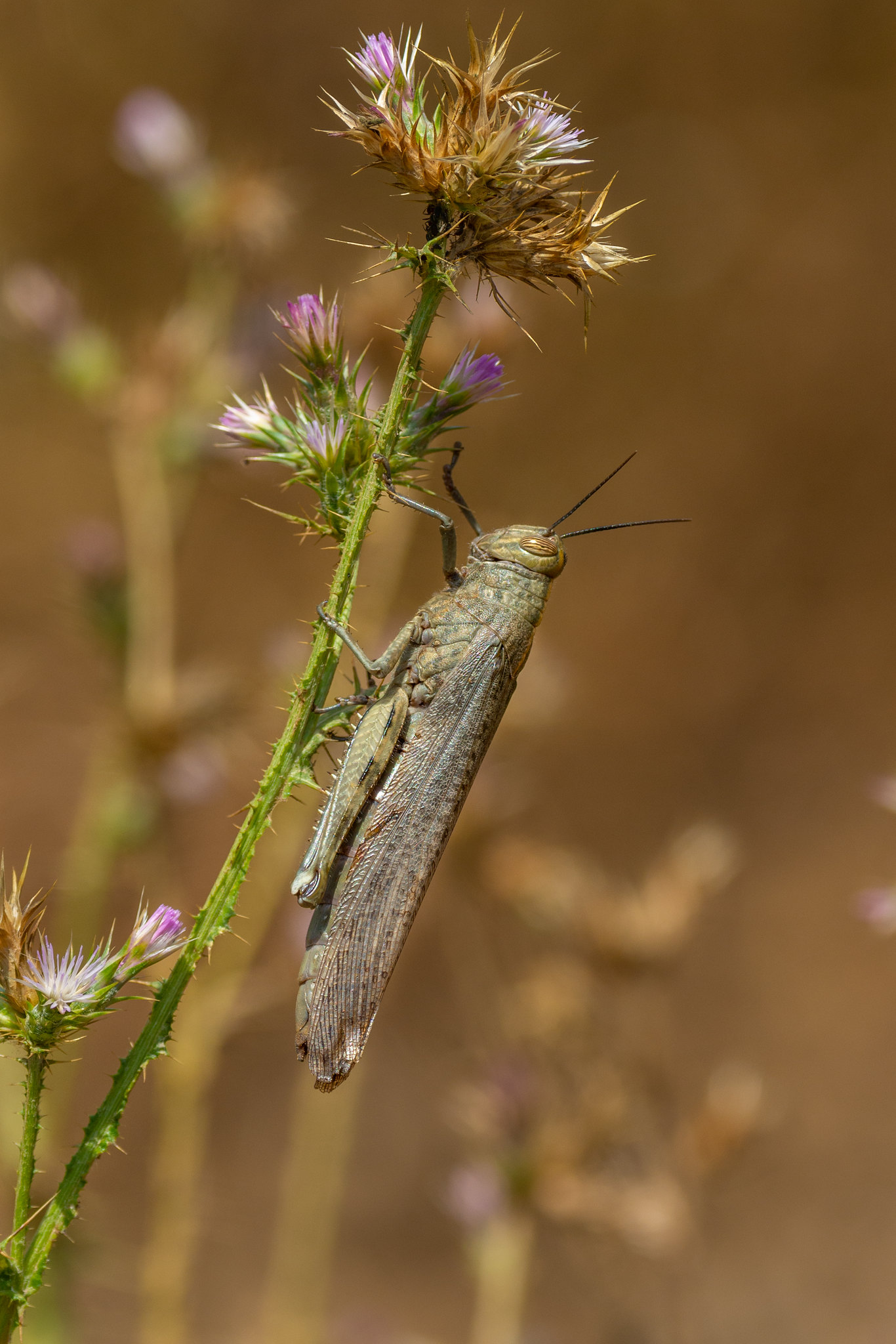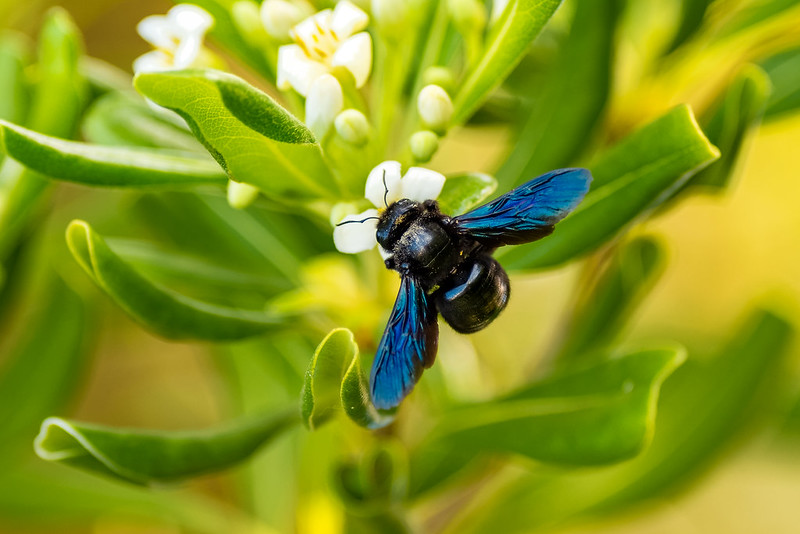I take a camera along on my Dog Walks to bring you some of the sightings that I see on my morning walks, these photos are rarely going to be great quality as its hard enough keeping an energetic Dog entertained and get close enough to anything. They also help me identify where species are so that I can plan to return.
Now that the temperatures are returning to normal (30+ degrees), the Egyptian Grasshoppers are becoming a common sight. The Anacridium aegyptium (scientific name) is very common here in the hills as it has the perfect climate and habitat.
It is a large Grasshopper (one of Europe’s largest), the females can grow up to 70mm long with the males considerably smaller at around 55mm. Although they eat leaves they are not really a pest as they are solitary rather than swarm, but of course, they may feast on your home-grown vegetable plot but as they are solitary they may not cause too much of an issue.




